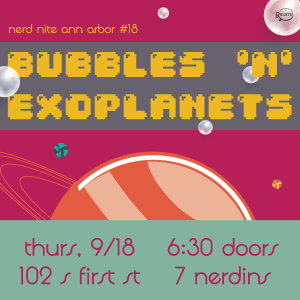
You probably think of bubbles as delightful —whether in your drink or being created by little kids. However, there’s waaay more to bubbles — their power can be harnessed in scientific fields including medicine. Brandon Patterson, a PhD student in mechanical engineering, lets us know what’s poppin’ in the world of bubbles.
Yearning for something more extra-terrestrial? Dr. Tim Chambers — who works on science education, both locally as a teacher, and with organizations like NASA — fills us in on exoplanet research. Astronomers have found thousands of planets beyond our solar system — what might we learn about and from their discoveries? And what’s still unknown?
Grab a friend and a drink (bubbly or not!), and we’ll see you for the next Nerd Nite!
When: September 18th, 2014, doors at 630pm, talks at 7pm!
Where: LIVE, 102 S First St, Ann Arbor
Moola: FREE! Thanks, Ann Arbor District Library!
 Brandon Patterson – Bubbles and sound: Explosions in people for the greater good
Brandon Patterson – Bubbles and sound: Explosions in people for the greater good
Everyone knows that bubbles delight children, clean dishes, and add the fizz to champagne. But it may surprise you to find out that they can also wreak havoc on ships, deliver cancer drugs to the brain, and break apart anything from steel to human tissue. During this talk we’ll step into the wonderful world of bubbles and take a look at how scientists are trying to use ultrasound to trigger carefully controlled bubble collapses and explosions in the body to fight cancer, kidney stones, and other ailments.
About Brandon Patterson:
Brandon is a cheerful and curious fellow, haphazardly wandering through life as he tries to figure out how the world works. For now his wandering has brought him to the University of Michigan to pursue a Ph.D. in mechanical engineering, studying how bubbles collapse and explode in tissue. When not playing with bubbles, Brandon enjoys biking, reading, tinkering, and arguing.
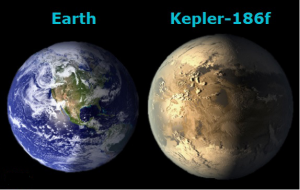
Tim Chambers – Extrasolar Planets in a (very large) Nutshell
In the past twenty years, astronomers have detected thousands of planets outside our solar system. In this talk, you’ll learn about the techniques scientists use to discover exoplanets and study their properties. You’ll also see some of the unusual findings of exoplanet research so far, and what questions astronomers in the field are currently trying to answer.
About Tim Chambers:
Tim earned a PhD in physics at the University of Arizona, but bleeds Maize and Blue from his years as an undergrad in Ann Arbor. He is currently dividing his time between teaching high school and developing educational materials for NASA and other space science organizations. Outside of work, he can be found brewing beer, slaying dragons, or rocking out.

Join us for the August installment of Nerd Nite for talks on topics that range from our human cells to trees to teeny satellites…
Intrigued by the human body? Katie Parzych will clue us in on the process of autophagy – a recycling process that our cells use to stay healthy. Curious about the natural world beyond the human body? Kirsti Ashworth gives us the lowdown on chemicals produced by trees, and how they might relate to air pollution, and the related “nefarious” world of plant communication. And, if you’re more interested in something above and beyond the earth – Michael Kirkhart, amateur satellite developer/operator tells us all about a tiny satellite called $50SAT!
When: August 21st, 2014, doors at 630pm, talks at 7pm!
Where: LIVE, 102 S First St, Ann Arbor
Moola: FREE! Thanks, Ann Arbor District Library!
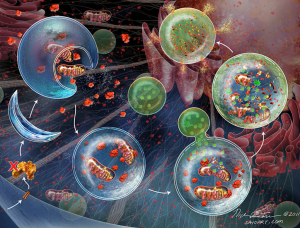 Katie Parzych – Autophagy: How Cells Recycle to Survive
Katie Parzych – Autophagy: How Cells Recycle to Survive
Autophagy is a recycling process that our cells use to stay clean and healthy. Defects in autophagy can contribute to several diseases, including Alzheimer’s disease and cancer. In this talk, I’ll be discussing how autophagy works, why maintaining the right balance of autophagy is important in preventing disease, and how expanding our understanding of how cells control autophagy is important for developing new treatments for diseases.
About Katie Parzych:
Katie is a PhD student at the University of Michigan, where she studies how yeast cells regulate autophagy in response to nutrient starvation. She is a recent participant of the RELATE workshop aimed at teaching scientists how to communicate their research to a wide range of audiences. When not geeking out about microbiology and yeast, Katie can usually be found acting on stage with a number of Ann Arbor’s local theatre groups.

Michael Kirkhart – $50SAT: 3 hams and a university in Kentucky on their quest to build the world’s smallest functioning satellite
On November 21, 2013, a Dnepr rocket was launched from Russia carrying 32 satellites, including 4 of a new class of very small satellites known as PocketQubes. One of these PocketQubes was built as a collaborative effort between Professor Robert Twiggs of Morehead State University and 3 amateur radio operators: Howie DeFelice (AB2S), Stuart Robinson (GW7HPW), and Michael Kirkhart (KD8QBA). This satellite, known by its official name of Eagle-2, it unofficial name of $50SAT, and its OSCAR (Orbiting Satellite Carrying Amateur Radio) designation of Morehead OSCAR 76, has surprised its developers by:
1. Working
2. After almost 9 months, continuing to work (August 21 will mark the 9 month anniversary of the launch)
This talk will provide an overview of the project, including some of the challenges involved as well as a discussion on in-orbit performance.
About Michael Kirkhart:
Michael Kirkhart is an electronics engineer, hardware hacker, amateur radio operator. He recently added the title of amateur satellite developer/operator to the list.
 Kirsti Ashworth – Trees – Heroes or Villains in the Battle Against Air Pollution?
Kirsti Ashworth – Trees – Heroes or Villains in the Battle Against Air Pollution?
I’ll be looking at the role that certain chemicals produced and released by forests play in air pollution, and asking whether these chemicals alleviate or exacerbate the problems we encounter in such diverse places as LA and Beijing. I’ll be taking you into the nefarious world of plant communication, and letting you in on the secret of what stresses out a plant. We’ll also be considering how widespread these chemicals are and what their fate is once they leave the tree and hit the atmosphere. And of course, trying to decide which side trees are on…
About Kirsti Ashworth:
Kirsti is a Brit, who has only recently made it across the pond and into Michigan. She gained a PhD in Atmospheric Science from Lancaster University in 2012, where she pondered whether the cultivation of biofuels could affect human health and crop production. In between, she worked as a research scientist in deepest, darkest Bavaria – at Garmisch-Partenkirchen, Germany’s premier alpine ski-resort (though sadly she did have to spend some time most days working). While loving the life in Ann Arbor, she does occasionally miss seeing the mountains!

Get the skinny on under-appreciated “sentinel” cells called macrophages, pick up tricks to boost your errand-running efficiency, and investigate something called Growth Factor X’s role in the brain – is it truly a hero or a villain?
Join us for a special super-science edition of Nerd Nite, featuring speakers from the University of Michigan’s RELATE program.
Grab a drink, bring a friend, and immerse yourself in some of the research being done right in our very own fair city.
When: July 24th, 2014, doors at 630pm, talks at 7pm!
Where: LIVE, 102 S First St, Ann Arbor
Moola: FREE! Thanks, Ann Arbor District Library!
 Gabriel Martinez-Santibañez – Fat and Diabetes: What it is, how it works, and how to get rid of it
Gabriel Martinez-Santibañez – Fat and Diabetes: What it is, how it works, and how to get rid of it
In this talk, Gabriel will address the many hats worn by the macrophage; the underappreciated sentinels that play key roles in regulating how our fat grows, shrinks, and functions. He will describe the ins and outs of type II diabetes and how these macrophages are involved in its development. He will also dish out some tips on how to lose weight and prevent the development of diabetes by comparing and contrasting some of the most popular and successful diet strategies (Atkins, Zone, Glycemic Index, Mediterranean, Paleo, Juicing). Finally, he will discuss the most successful weight loss strategy that uses “THIS ONE SECRET!!!”
About Gabriel Martinez-Santibañez:
Gabriel is from Southern California and is currently a PhD student at the University of Michigan, where he studies obesity and the immune cell components involved in the development of Type II Diabetes. When not in lab, he likes to grow things in the garden, read about international cuisine, and discuss the merits of jam.

Moritz Niendorf – Recalculating Route: Go to the Post Office Before the Grocery
The talk will address the issue that when trying to pick the right order in which to run errands sometimes things do not go as planned due to traffic congestion. I will talk about under which conditions it is better to start reconsidering those decisions and more generally highlight what happens if traffic jams start interfering with a previously well planned sequence in which to visit locations of interest.
About Moritz Niendorf :
Moritz received a German diploma in aerospace engineering from the University of Stuttgart, Germany in 2010. After graduation he worked as a researcher at the department for unmanned aircraft at DLR (German Aerospace Center) in Braunschweig, Germany. In August 2012 he joined the University of Michigan as a graduate student. His research focuses on stability analysis for solutions to integer optimization problem and its application to mission planning for unmanned aircraft.
 Elyse L. Aurbach – Growth Factor X: Superhero or Villain in the Depressed Brain?
Elyse L. Aurbach – Growth Factor X: Superhero or Villain in the Depressed Brain?
I’ll be talking about the role of two members of the fibroblast growth factor molecular family in major depression. In the hippocampus, a region of the brain critical for memory and emotion, these growth factor molecules become disrupted after stressful experiences. These changes may affect the way the hippocampus functions during health and during depression, so studying them may help the medical community to develop more effective treatments for mood disorders.
About Elyse L. Aurbach:
Elyse is a grad student studying the neuroscience of depression at UM (which isn’t as depressing as it sounds). When not obsessing over experiments, grammar, or her cat, she coordinates RELATE (Researchers Expanding Lay-Audience Teaching and Engagement) with collaborators Katie Prater and Leah Bricker. A relatively recent transplant to the Midwest, Elyse dreams of building igloos and catching fireflies.
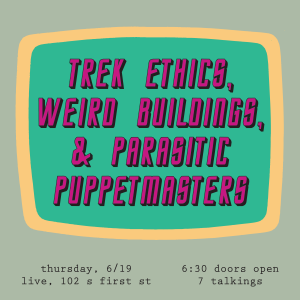
We’re back from out month off, and if you missed it, Nerd Nite Global Fest/Smithsonian was AMAZING! This month, consider the ethical system that governs the United Federation of Plants; the Prime Directive, hear about some interesting/weird stories and people regarding weird buildings in Ann Arbor, and learn about a parasite that can literally manipulate the behavior of its human host! So show up, have a drink, meet other nerds, and learn a bunch of awesome new junk!
When: June 19th, 2014, doors at 630pm, talks at 7pm!
Where: LIVE, 102 S First St, Ann Arbor
Moola: FREE! Thanks, Ann Arbor District Library!
 Marcus Dillon – Prime Directive: The Ethics of Star Trek
Marcus Dillon – Prime Directive: The Ethics of Star Trek
In this talk, Marcus will outline the world of Star Trek and the ethical system that governs the United Federation of Plants; the Prime Directive.
Trek has touched on many issues over the course of its 50 year history. To name a few: freedom of speech, military interventionism, racism, the existence of God, transgender issues, and photon torpedoes.
Using a few episodes as a guide, we will challenge the merits and limits of this system and the moral predicaments it presents to the interstellar explorers of the future.
Don’t worry if you don’t know the difference between a tachyon and a tribble, this talk won’t go over your head.
About Marcus Dillon:
Marcus is an Ann Arbor native and has undergraduate degrees in US and Chinese history from Miskatonic University. He writes jokes on the internet pseudonymously. The Canadian border police have made it clear that he is no longer welcome in that country. He is totally unqualified to speak on any topic at any event, but hey, he works for free.
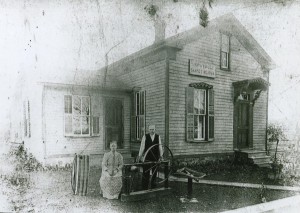
Patrick McCauley – Obsessively Researching Historic Buildings, and the Weird Things You Find
I briefly mention some of the interesting/weird stories and people I found while researching the houses for my book, and then I go into depth about the research I did on my own historic house, which has had some really weird characters associated with it.
About Patrick McCauley:
A native of the Ann Arbor area, growing up in Salem Township. I am a graduate of the University of Michigan (2000) with a BA in History. I have spent the last 20 years working on older and historic houses with my family’s house painting and home restoration business. In addition, I have bought and restored 3 historic properties in Ann Arbor, winning a Rehabilitation Award from the Historic District Commission. I am the former Chair of the Ann Arbor Historic District Commission, and co-author of Historic Ann Arbor: An Architectural Guide. I am currently a realtor at the Charles Reinhart Company, and I continue to restore and research historic houses.
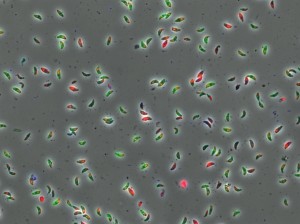 Aric J Schultz – Meet your Puppet Master: Toxoplasma gondii
Aric J Schultz – Meet your Puppet Master: Toxoplasma gondii
Toxoplasma gondii is a common parasite that infects humans worldwide. It is well known that T. gondii can manipulate the behavior of infected rodents, and current research is focusing on the parasite’s ability to manipulate the behavior of its human hosts as well.
About Aric J Schultz:
I am a graduate student at the University of Michigan, studying microbial pathogenesis. My thesis work focuses on aspects of the Toxoplasma gondii life cycle, and how it causes human disease.

How do tiny twisted trees come to be? What’s happening in the airwaves around you as amateur (aka ham) radio operators connect? What’s in store at a small version of Maker Faire in our very own backyard?
Come have a drink, meet up with your fellow nerds, and learn about little leaves, hams, and mini-makers!
When: April 17th, 2014, doors at 630pm, talks at 7pm!
Where: LIVE, 102 S First St, Ann Arbor
Moola: $5
Tickets: At the door or https://nna2-april-2014.eventbrite.com!
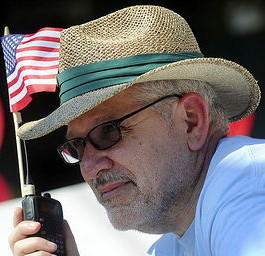 Dan Romanchik – Ham Radio Operators: The Original Nerds
Dan Romanchik – Ham Radio Operators: The Original Nerds
Amateur, or ham, radio operators are arguably the original nerds. Ham radio has been around for more than 100 years, and is still going strong. In fact, there are more than 700,000 licensed radio amateurs in the U.S. today. Longtime ham radio operator, Dan Romanchik, KB6NU, will talk about the history of amateur radio, modern amateur radio technology, amateur radio activities in and around Ann Arbor, and how to get your amateur radio license.
About Dan Romanchik:
Dan Romanchik, KB6NU, has been a radio nerd for as long as he can remember. He got his start as a kid, listening to the shortwave band on his grandparents’ Philco console radio. He is a past president of ARROW, the local amateur radio club, and station manager for WA2HOM, the amateur radio station at the Hands-On Museum. In addition to talking to people all over the world via shortwave radio, he enjoys teaching amateur radio classes and has written three amateur radio license study guides. He also blogs about ham radio at www.kb6nu.com.

Jay Sinclair – Tiny Twisted Trees – An Introduction to Bonsai
This will be a brief introduction to the art and technique of bonsai. Topics will include a discussion of the origins of bonsai, and how the art has evolved. We will look at examples of some bonsai styles and discuss bonsai aesthetics. Basic bonsai techniques and horticulture will also be addressed.
About Jay Sinclair:
Jay Sinclair is a middle school Earth Science teacher. He has long been drawn to activities that have both technical and aesthetic aspects. Jay has been involved in bonsai since the early nineties, and after more than 20 years still considers himself a beginner. His other interests include astronomy, nature study, and cycling, on one or two wheels.
 Emily Puckett Rodgers – Why I love the Ann Arbor Mini Maker Faire
Emily Puckett Rodgers – Why I love the Ann Arbor Mini Maker Faire
All Maker Faires involve similar ingredients: a large space, lots of noise, interesting activities, and creatives all around. But each Faire highlights the unique attributes of the community members who participate in the Faire. The Ann Arbor Mini Maker Faire showcases just what makes this town such a great place to live in: the many people, skills, talents, and interests that come together for one day to celebrate making and learning together.
About Emily Puckett Rodgers:
Emily is a projects librarian at the University of Michigan Library. She is also a director of A2Geeks, a local organization whose aim is to create a flourishing community that supports creative and technologically minded people in Ann Arbor She has helped organize the Ann Arbor Mini Maker Faire for the past two years.
 We are teaming up again to have a nite of Toejam & Earl, Sonic & Knuckles, or whatever your favorite Sega Genesis games are! Since AADL is sponsoring this event is is completely FREE of charge again!
We are teaming up again to have a nite of Toejam & Earl, Sonic & Knuckles, or whatever your favorite Sega Genesis games are! Since AADL is sponsoring this event is is completely FREE of charge again!
When: April 10th, 2013, 7pm!
Where: LIVE, 102 S First St, Ann Arbor
Moola: FREE! Thank you, Ann Arbor District Library!

Did you know Michigan had its own “forgotten Woodstock” — a rock fest held less than an hour from Ann Arbor in 1970? Have you ever wished you could tell what a tree was just by looking at it? Or do you want to learn a little more about the most effective world revolutionary of all time? We are teaming up with Ann Arbor District Library this month to bring us all this with absolutely no cover!
When: March 27th, 2013, doors at 630pm, talks at 7pm!
Where: LIVE, 102 S First St, Ann Arbor
Moola: FREE! Thank you, Ann Arbor District Library!
 Mark Deming – Michigan’s Woodstock: The 1970 Goose Lake International Music Festival: The Greatest Show You’ve Never Heard of
Mark Deming – Michigan’s Woodstock: The 1970 Goose Lake International Music Festival: The Greatest Show You’ve Never Heard of
In the summer of 1970, over 200,000 rock ‘n’ roll fans made their way to Goose Lake just outside Jackson, Michigan for the biggest rock festival ever held in the Midwest. It featured nearly all the major Michigan acts of the day, including the Stooges, the MC5, SRC, the Up, Brownsville Station, and Mitch Ryder and Detroit, as well as Rod Stewart and the Faces, Joe Cocker, the James Gang, Mountain, Chicago, Jethro Tull, and the Flying Burrito Brothers. The festival made headlines, angered the governor, and had local homeowners up in arms. So how come you’ve never heard of it? Music writer Mark Deming discusses the strange but true story of the biggest weekend in Michigan’s musical history.
About Mark Deming:
Mark Deming is a writer who has been covering music, film, and various aspects of popular culture since the 1980s. He’s been a regular contributor to All Music Guide and All Movie Guide since 1999, and has also written for Ugly Things, Resonance, Detroit Metro Times, Chicago New Times, Phoenix New Times, Ann Arbor Current, American Garage, and many others. His vocal stylings have appeared on recordings by the Clutters, Mark Lansing and his Board of Water and Light, the End Times, and the Seger Liberation Army, and he once met Captain Kangaroo and Leonard Cohen on the same day.

Ben Connor Barrie – Barking Up the Wrong Tree: A Crash Course in Tree Identification
This lecture will be a crash course in tree identification. Attendees will learn how to start developing their tree ID skills, not just memorize a few trees. Beginners will focus on accurate genus level identification. More advanced participants will work on species level identification. By the end of the lecture, everyone should be able to confidently identify some of the most common trees in the region.
About Ben Connor Barrie:
Ben is a Ph.D. student studying forest ecology at the School of Natural Resources and the Environment. In his spare time, he runs the local website Damn Arbor. He knows all the trees.
 Michael Leonard – Thomas Paine: How the First World Revolutionary Fell from Fame and Became the Forgotten Founding Father (of both America and France!)
Michael Leonard – Thomas Paine: How the First World Revolutionary Fell from Fame and Became the Forgotten Founding Father (of both America and France!)
At 37, a simple girdle maker and tax collector named Thomas Paine came to the American colonies and became known as Tom Paine. There, instead of making girdles or collecting taxes, he would leave women’s figures alone and instead inspire tax payers to not only stop paying their taxes to the king, but “begin the world over again” with their very own nation – run by them! Rich land owning colonists would welcome his powerful words of inspiration to rouse the rabble to their cause, but then abandon him at their first opportunity, when he proved himself to be a bit too dedicated to democratic participation for all – everywhere – from the country he named “The United States of America” to the other republic he directly helped to found, France’s First Republic… and beyond. Tom Paine may have been a late bloomer, but he sure had a way with words that would make him not only the bestselling author of his day, but would also make him – while seen only as an expendable propagandist to those who would take advantage of him to take power – the most effective world revolutionary of all time… Eat your heart out Che.
About Michael Leonard:
Trained as an applied socio-cultural anthropologist who indeed teaches cultural anthropology by day, Michael has decided to take on an alter ego by night – that of an intrepid historian of an obscure, yet important forgotten person of the past, and the “crimes” he perpetrated to earn his obscurity. In this role, Michael hopes to make people think, even if this also may make them a bit uncomfortable – as thinking often does to people. Thomas Paine is Michael’s target to help rescue from obscurity – in comparison with a far more famous Thomas of his ideological ilk, if not style – who are the subject of a book he’s working on entitled, Doubting Thomases.
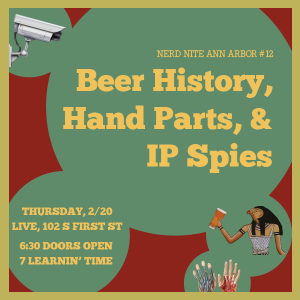 Want to know where beer came from? What about what the inside of your hand looks like? Curious who’s looking through all the cameras you see everywhere? Good, ’cause those are the topics this month! Come have a cocktail and learn, maybe even meet some new nerdy friends!
Want to know where beer came from? What about what the inside of your hand looks like? Curious who’s looking through all the cameras you see everywhere? Good, ’cause those are the topics this month! Come have a cocktail and learn, maybe even meet some new nerdy friends!
When: February 20th, 2013, doors at 630pm, talks at 7pm!
Where: LIVE, 102 S First St, Ann Arbor
Moola: $5
Tickets: At the door or http://beer-hands-spies.eventbrite.com
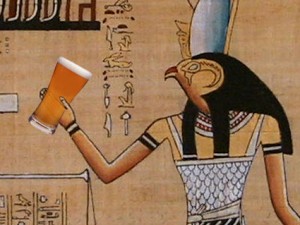
Patti Smith – The History of Beer: From Mesopotamia to Mug Clubs
This talk will explore the origins of beer in ancient Egypt/Mesopotamia, through the European continent, to the Americas, through Prohibition and today. Along the way, we will learn about different styles of beer, how the brewing process has changed and how Prohibition forever changed the landscape of this fermented beverage.
About Patti Smith:
Patti Smith is a special education teacher and former lawyer who eschewed beer for most of her life. Thanks to a class on homebrewing and the Leopold Brothers’ microbrewery, she has enjoyed all sorts of craft beer since 2005. Patti lives with her boyfriend and their cats in Ann Arbor. She blogs about beer (and sometimes food) at www.teacherpatti.com
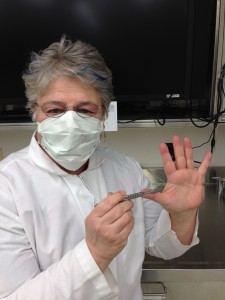 Susan Starr – .. on the other hand …
Susan Starr – .. on the other hand …
I will discuss the anatomy of the human hand from skin to bones.
About Susan Starr:
BS from MSU in Animal Husbandry, BS from EMU in Biology (minor Chem/ Concurrent Secondary Teaching Cert.), MS from EMU in Community College Biology Teaching. 26+ years teaching almost every Biology course known, from General Bio at Washtenaw Community College to Gross Anatomy for 3 different Doctoral programs at U-Mich. I have worked with cadavers, either as an instructor or prosector for plastination for 14 years. Beginning in May 2014, I will be teaching the lab portion of Medical Gross Anatomy for the new Physician’s Assistant program at EMU. Married for 35+ years (to the same guy!), 2 kids, both grown, successful adults. I enjoy gardening, walking my dog in the woods and cooking healthy meals.
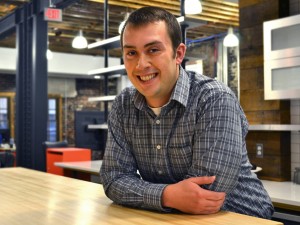 Jeff Kelley – Eyes Everywhere: The Rise of IP Cameras
Jeff Kelley – Eyes Everywhere: The Rise of IP Cameras
A recent trend in cybersecurity is the realization that there are thousands upon thousands of unsecured IP cameras freely broadcasting live images to any browser who asks. Combined with huge lists of exposed cameras, special websites to search for them, and communities built around looking at them, there is now more attention paid than ever to this issue. But it isn’t all people trying to spy on their neighbors: this has serious implications for business, security, and privacy.
About Jeff Kelley:
Jeff Kelley makes iOS apps at Detroit Labs. When he’s not making apps, he’s stuck in his car listening to podcasts, running a lot, and reading about Internet security.
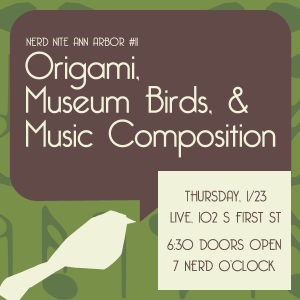
This month, you can look forward to the fascinating uses of museum bird collections, some of the most amazing origami you’ve ever seen, and styles of music composition. The speakers:
When: January 23rd, 2013, doors at 630pm, talks at 7pm!
Where: LIVE, 102 S First St, Ann Arbor
Moola: $5
Tickets: At the door or http://birds-music-origami.eventbrite.com
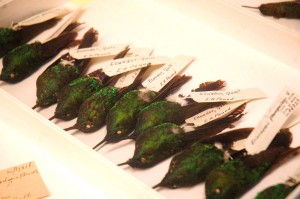
Sara Cole – The Secret Life of Stuffed Birds
Most natural history museums house vast collections of specimens that are never seen by the public. Get a sneak peek at what goes on “behind the scenes” at our own Natural History museum and learn about why such collections are important for both scientists and artists.
About Sara Cole:
Sara is a research assistant in the Birds Division of the UofM Museum of Natural History, where she catalogs and prepares bird specimens for the research collection. She is also a graduate student at the University of Michigan School of Natural Resources and Environment where she studies environmental education and communication.
Beth Johnson – Beyond Flapping Cranes: Contemporary Origami Art and Design
When people hear the word origami, they typically think of flapping cranes and child’s crafts. They are often unfamiliar with the rich diversity of contemporary origami art, which ranges from the abstract and sculptural to the highly representational and mathematical. I’ll introduce the audience to the great variety of origami styles, discuss the processes and techniques I use to design my original models, and explore the endless possibilities that can arise simply through folding a single square sheet of paper without any cuts or glue.
About Beth Johnson:
Beth Johnson is an origami artist from Ann Arbor, Michigan. She has been folding paper for many years, but only recently began designing her own models in 2010. Her work has been described as unique, fresh and original. In recognition of her designs, she was awarded the Florence Temko Award by OrigamiUSA in 2011, which honors a “lone folder” who has contributed to the art of origami in a meaningful way. She has since gained a great deal of recognition for her work in a relatively short period of time, and is quickly establishing herself as a pre-eminent artist in the origami world. Her diagrams have been published in books and magazines around the world, she has exhibited in multiple exhibits across the United States and abroad, and she has participated as a special guest at three origami conventions in 2013.
 James York – Six or Half a Dozen – Serialism & Aleatory Music: Different Approaches to a Common Problem
James York – Six or Half a Dozen – Serialism & Aleatory Music: Different Approaches to a Common Problem
In the early to mid-20th century, composers of Western classical music were writing some seriously crazy stuff – I will play you some of it to prove it. In many cases, they were using brand new techniques to help with the writing of these pieces. Two schools of practice rose to prominence during this time. One was Serialism, whose practitioners created complex matrices to aid in the composition of their music in order to distance it from the traditional tonalities. The other was the Aleatoric or Indeterminate composers who relied on elements of chance to help compose and even perform their pieces. As is often the case with artist enclaves, they didn’t always have very high opinions of each other or their music; but they shared a desire to solve a common problem in two very different ways. What problem? Come and find out!
About James York:
I started out very interested in music. I taught myself to do it. Then I went to school for it. Then I got paid to do it. A while later I got interested in programming. I went to school for it. I taught myself to do it. Now I get paid to do it. I’ve always liked knowing stuff. Any old stuff. All the stuff.

When: November 21st, 2013, doors at 630pm, talks at 7pm!
Where: LIVE, 102 S First St, Ann Arbor
Moola: $5
Tickets: At the door or http://nna2november.eventbrite.com
November will show us how robotics is an engineer’s team sport, how anyone at all can be a video game developer (no experience required!), and how communism just did a really bang-up job showing its usefulness. Just spectacular. The line-up:
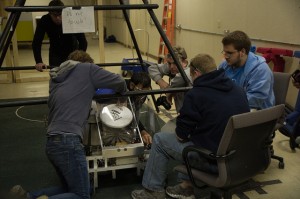 Ken & Kaleb Fox – FIRST Robotics: Team Sport for Engineers
Ken & Kaleb Fox – FIRST Robotics: Team Sport for Engineers
FIRST FRC (backronym meaning For Inspiration and Recognition of Science and Technology) is an international robotics competition involving over 2,800 high school teams and 71,000 students. It was started in 1989 by Dean Kamen “to transform our culture by creating a world where science and technology are celebrated and where young people dream of becoming science and technology leaders.” Each year teams have 6 weeks to imagine, design and build a robot able to play that year’s game. The games have never repeated, but they are always played 3 vs 3 on an enclosed field about the size of a basketball court. The robots weigh 150 pounds
and draw 120 amps. These aren’t roombas! This talk will give an insider’s view into a build and competition season.
About Ken & Kaleb Fox:
Kaleb is a student at Skyline High School and a member of Eagle Imperium Team 3322 http://www.skylinerobotics.org/. Ken is a software engineer at Atomic Object in Ann Arbor and a FIRST Robotics mentor. They’ve been with the team for 2 years. When not working on robots, their passions include cooking, anime, reading and board gaming. Well Kaleb anyways–Ken’s pretty much obsessed with robots.
Jennifer Marsman – You don’t have to be a computer nerd: How any nerd can build a cool game to publish in an app store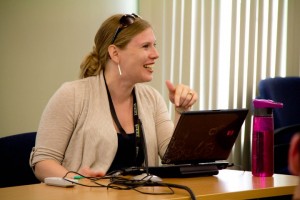
I discovered a very cool tool called Construct 2 (made by a company called Scirra) which allows you to easily create compelling games. You simply add backgrounds and sprites on a page, and use an “event sheet” of simple if-then statements to define your game logic. The game can then be exported as an iOS, Android, Windows Store, or Windows Phone app. There are also templates/tutorials to get you started creating a shooter game, physics puzzle, driving game, and platform game (like Super Mario Brothers). I’ll demo how easy and fun this is! All nerds will leave knowing the fundamentals to build a wicked cool game.
About Jennifer Marsman:
Jennifer Marsman is a Principal Developer Evangelist in Microsoft’s Developer and Platform Evangelism group, where she educates developers on Microsoft’s new technologies. Jennifer is a frequent speaker at software development conferences across the United States. In 2009, Jennifer was chosen as “Techie whose innovation will have the biggest impact” by X-OLOGY for her work with GiveCamps, a weekend-long event where developers code for charity. Prior to this role, Jennifer was a software developer in Microsoft’s Natural Interactive Services division, where she earned two patents for her work in search and data mining algorithms. Jennifer holds a BSE in Computer Engineering and MSE in Computer Science and Engineering from the University of Michigan in Ann Arbor. Her graduate work specialized in artificial intelligence and computational theory. Jennifer blogs at http://blogs.msdn.com/jennifer and tweets at http://twitter.com/jennifermarsman.
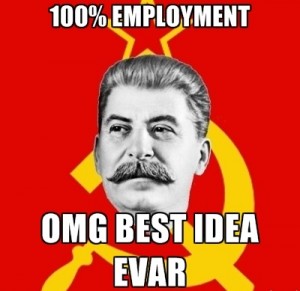 Marcus Dillon – Communism’s Greatest Hits
Marcus Dillon – Communism’s Greatest Hits
The communist utopia experiments of the 20th century did not go as well as planned. Often the failures were horrific. The rest of the time they were horrific and pure comedy gold. In this presentation, we’ll be covering 10 of the funniest and most ludicrous goofs, fuckups, and fails by communist dictatorships from all over the world. Fun is mandatory. All surplus popcorn will be confiscated. Insufficient applause at the end will be regarded as anti-revolutionary.
About Marcus Dillon:
Marcus is an Ann Arbor native and has undergraduate degrees in US and Chinese history. He writes jokes on the internet pseudonymously. The Canadian border police have made it clear that he is no longer welcome in that country. He is totally unqualified to speak on any topic at any event, but hey, he works for free.
 Brandon Patterson – Bubbles and sound: Explosions in people for the greater good
Brandon Patterson – Bubbles and sound: Explosions in people for the greater good

































